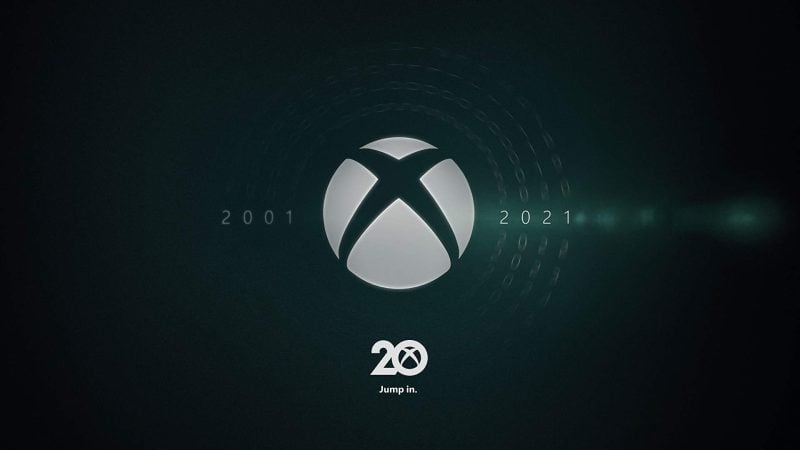
Today, Microsoft celebrates the 20-year anniversary of the original Xbox, first released two decades ago to the day on November 15, 2001.
Originally unveiled at CES 2001 and released the same year in the US, the Xbox brand marked Microsoft’s entry into the console gaming market — and with four generations of Xbox, the brand has left quite the impact on the industry.
Perhaps the greatest ace up its sleeve was ushering in the online multiplayer age of console gaming. Make no mistake, the Xbox wasn’t the first console to tackle the idea; that honor will always fall to the Sega Dreamcast, which also featured online support out of the box.
However it’s where Sega’s final console failed that the Xbox drew its greatest success, and because of Xbox Live’s success, it meant the console was here to stay. Lest we forget, the original console is also responsible for giving console sim racing fans a competent rival to PlayStation’s Gran Turismo franchise with Forza Motorsport, released on May 3, 2005.
On November 22, 2005, the original console was followed up by its successor: the Xbox 360. Helping to usher in the high-definition era alongside the PlayStation 3, the second Xbox console made an even bigger impact.
Where the original Xbox opted for what was basically off-the-shelf PC components, the 360 went with a more purpose-built hardware architecture.
Power for the console’s processing came from a 3.2GHz triple-core IBM PowerPC-based CPU, codenamed Xenon. Graphics processing fell to the Xenos chip, designed by ATI (before being acquired by AMD in 2006).
Based on the TeraScale architecture, the GPU packed in 48 vector processors, capable of performing vertex or pixel shader operations, a 500MHz clock speed, and 512MB of GDDR3 memory (shared with the CPU), the 360 was far from being a slouch for the time. In fact, for a time, both it and PS3 rivaled — if not bested — PC gaming in graphical fidelity.
While launch consoles were plagued with the RROD (Red Ring of Death), the console’s game library grew extensively over its predecessor. By now, racer gamers had plenty of games to enjoy by way of Project Gotham Racing 3 & 4, Forza Motorsport 2-4, Test Drive Unlimited 1 & 2, the hidden gem in SimBin’s Race Pro, as well as F1 2010, to name a select few.
On November 22 of 2013, the third generation Xbox would enter the fray: the Xbox One. While not a generation to forget for Microsoft, it didn’t start off on the right foot.
With issues concerning privacy, sharing games, always-on internet connectivity, and the focus on the console being at the center of one’s entertainment experience, the image of the Xbox One was a confusing one right out of the gate.
The eighth generation was the first to give us an updated, more powerful version of the console in the form of 2017’s Xbox One X. This looked to take the fight directly to Sony’s similar PlayStation 4 Pro, and it did just that.
Focusing on 4K and HDR gaming, the One X stood in at 4.5x more powerful than the original Xbox One. The upgraded Jaguar-based 8-core CPU ran at 2.3GHz (up from the original 1.75), and where things really took a turn for the better was the beefier GPU.
Featuring 40 GCN (Graphics Core Next) compute units (up from the original 12) clocking in at 1.17GHz, compared to the original’s 853MHz (914MHz for the Xbox One S). Rounding out the package was a bump up to 12GB of GDDR5 shared system memory, with 9GB being available to developers. Not even the likes of Forza Motorsport 7 could tax the beefier GPU to its fullest.
That brings us to the current ninth generation of video game consoles and the current offering from Microsoft: the Xbox Series S and X. Revealed at The Game Awards in 2019, the Series X is a drastic departure from previous Xbox designs. Having more in common with Small Form Factor PCs than a conventional console, the Series X prioritizes airflow above all else, and for good reason.
At its heart is an 8-core AMD Zen 2-based CPU with a variable clock speed between 3.66GHz and 3.8GHz, depending on whether SMT (Simultaneous Multi-threading) is being used. AMD’s RDNA2-based GPU makes use of 52 compute units clocked at 1.825GHz, paired with 16GB of GDDR6 system memory on a 320-bit bus. With peak performance at 12 TFLOPS, the Series X is four times more powerful than the Xbox One X.
While the Series is aimed at 4K gaming, the Series S dials things back a little and focuses on a next-gen experience at more common display resolutions. As such, the GPU features 20 compute units clocked at 1.565GHz and makes do with 10GB of GDDR6 on a 128-bit bus. All other hardware between the two remains identical.
Like the PlayStation 5, this is the first Xbox to leverage the speeds of an NVMe (Non-Volatile Memory Express) SSD. The Series X comes with a 1TB internal drive out of the box, whereas the Series S halves the capacity to 512GB. Fortunately, both can be expanded with up to an additional 2TB of SSD storage courtesy of Seagate’s new offerings.
While demand hasn’t waned in the slightest, and according to Microsoft’s closely guarded figures the Series consoles are the best-selling consoles yet, the ninth-generation consoles are tricky to find.
Silicon shortages, which affect its Sony rival too and may last well into 2022, mean you can’t exactly walk into a store and purchase one from off the shelf, and it’ll be quite a while before that becomes the case.
Fun fact: while the previous startup jingles were all original, the Series consoles draw heavy inspiration from the Windows 98 startup sound. Don’t believe us? Compare the two for yourself!
Celebrating the anniversary further, on December 13, a six-episode documentary series “Power On: The Story of Xbox” will take things even further with stories from the Xbox team itself. This documentary will cover the beginning of the brand as a passion project and will go through the generations, even covering some of Xbox’s challenges such as the RROD. The series will be available on IMDb TV, Redbox, The Roku Channel, YouTube, and Microsoft.
Happy Birthday, Xbox.










